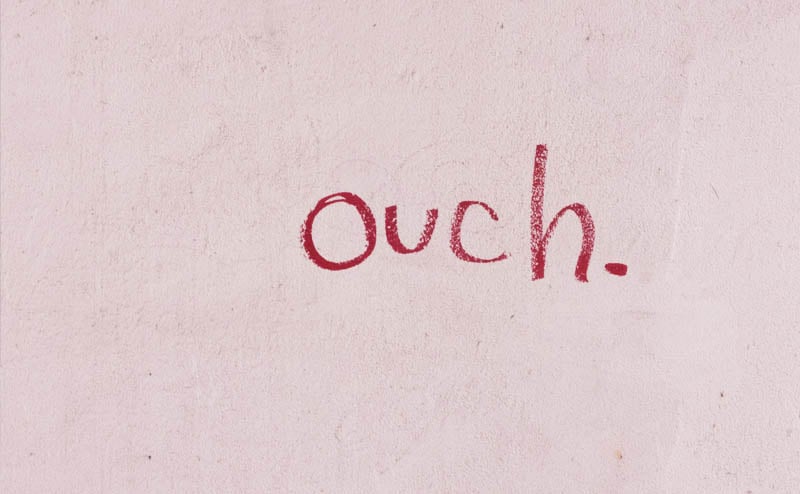
We’ve all heard the horror stories. An earring gets torn from the lobe by a grabby toddler. An eyebrow piercing is caught while playing sports and ripped from the face. Or—shudder—a nipple piercing rips after being snagged in clothing.
The truth is that, even if you’re super careful, snagging happens. Besides being incredibly painful, snagging can contribute to scarring and piercing infection, so overall, it’s best to be avoided.
The good news is that there are some common-sense tactics to limit the possibility of snagging and save yourself some pain. Here are some tips to avoid snagging.
A large portion of the snagging horror stories you’ll hear will involve some sort of sport or recreational activity. It makes sense; when you’re in a fast-paced environment, it’s easy for your jewelry to get caught and completely ripped out before you even realize it.
But, these instances aren’t limited to sports. Dancing in a large crowd, waterslides, and ziplines have all been known to catch on jewelry and rip them out.
This doesn’t mean that getting a body piercing means the end of all things fun. You simply need to be more careful when participating in these events. You might think that a music festival is the perfect place to reveal your new dangle belly ring, but keep in mind that it will be more easily snagged by crazy dancers. Instead, choose jewelry that’s less snaggable or cover the jewelry when you’re in a situation that carries a higher risk for snagging.
Mesh and lace can be your body piercings’ worst enemy. The tiny holes in the fabric tend to grab onto the ends of the jewelry, and before you know it, you’ve torn your piercing hole while changing.
Whenever you wear any clothing with many holes or snaggable pieces, you need to take extra care while you change. If possible (and after you’re done healing) it might be a good idea to take out your jewelry while changing into these clothes. When wearing these types of clothing, make sure that your jewelry stays well away from any snaggable areas.

Snagging is extra painful while the piercing is healing. During the healing period, you should stay away from all snaggable clothing to be safe. Once it heals, you’ll be able to wear your cute lace top again, as long as you take extra care while changing.
We love dangle jewelry. These larger jewelry pieces open the way for intricate designs, bold new looks, and a style that can’t be ignored.
But, dangles pose an extra risk of snagging. Dangles can be quite large, and if you’re not used to them, it’s easy to forget where they are and catch them on something.
When wearing dangle jewelry, it’s a good idea to limit the number of dangles that you wear. It’s much easier to keep an eye on a dangle or hoop earring in each lobe than it is to keep an eye on five large hoops going up your cartilage.
If dangles are your thing, just be prepared that you’ll likely experience snagging at least once during the life of your piercing if you’re not careful enough.
Long, thick hair cascading over your shoulders offers such an enviable look. It also offers a plethora of snagging risks.
It’s ridiculously easy for long hair to get caught in piercings—even nipple piercings. If it gets caught, all it takes is an absentminded flick of the hair, and bam! Snag.
If you’re one to run your fingers through your hair, then you’ll need to learn to take extra care once you get a piercing. In the first few weeks of your new piercing, it’s a good idea to wear your hair back to avoid snagging jewelry altogether. Once your piercing has healed and you start to wear your hair down again, make sure that you are purposeful with your hair playing to avoid grabbing your jewelry while tucking your hair behind your ear.
Those with long, curly hair might have more of a difficult time. Curly hair tends to knot a little easier, and locks can securely wrap themselves around your jewelry when you’re not paying attention. If you have long, curly hair, keep in mind that it will pose a challenge.
When you have a new piercing, it takes a while to get used to it. This in itself makes the jewelry more susceptible to snagging. On top of that, you’ll have larger jewelry in place to accommodate swelling. The fact is that it’s way too easy to snag new jewelry.
To avoid this, make sure that you protect your new jewelry. For new nipple piercings, wear a tight t-shirt or camisole beneath your clothes. Get super high waisted underwear—we’re talking granny panties—to cover your new belly piercing while at work or anywhere that it might get snagged. You can even use bandaids to cover your cartilage or other facial piercings while in an environment that poses a snag risk. Keep in mind, however, that a healing piercing does need oxygen, so you shouldn’t keep bandaids on for long periods of time. Additionally, you need to make sure that the bandaid isn’t too snug; putting pressure on the fresh piercing holes could lead to complications like rejection and embedded jewelry.
Choose dainty seamless hoops, straight barbells, simple belly rings (sans gemstones), or other simple jewelry pieces when you’re in situations that pose a high risk for snagging. These can still get snagged, but they won’t be snagged as easily as more intricate styles.
No matter how careful you are, snagging can happen. In certain situations—sexy times with your partner, for instance—your body jewelry will be the last thing on your mind until you feel the pain of it ripping from your skin. The good news is that the vast majority of snagging issues can be fixed, even if you’ll need some stitches.
Don’t let the fear of snagging preclude you from getting the piercing that you’ve always dreamed of. Simply be aware of your jewelry during recreational activities, invest in smaller jewelry pieces to wear in high-snag-risk situations, and be extra careful while wearing larger jewelry pieces or dangles, and there’s no reason why you need to add your piercing to the list of horror stories.
Leave A Comment